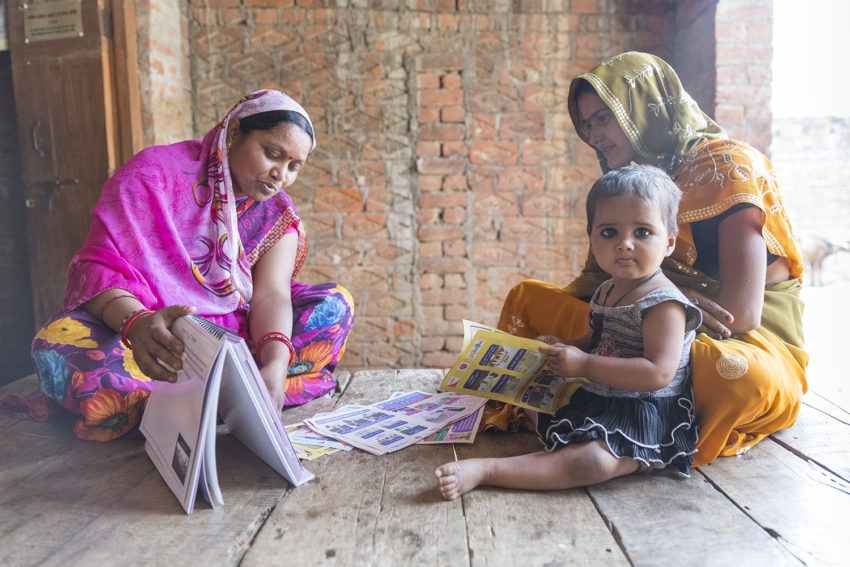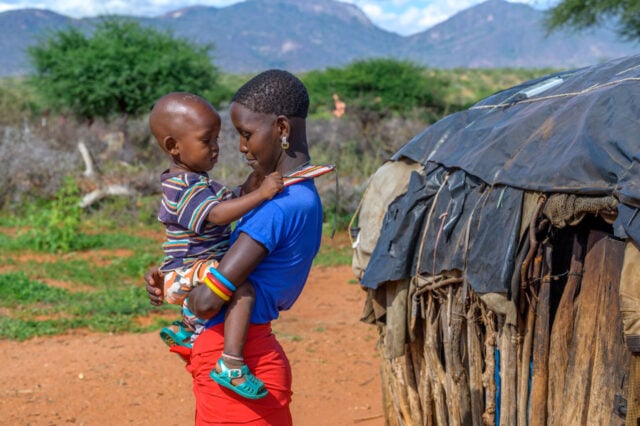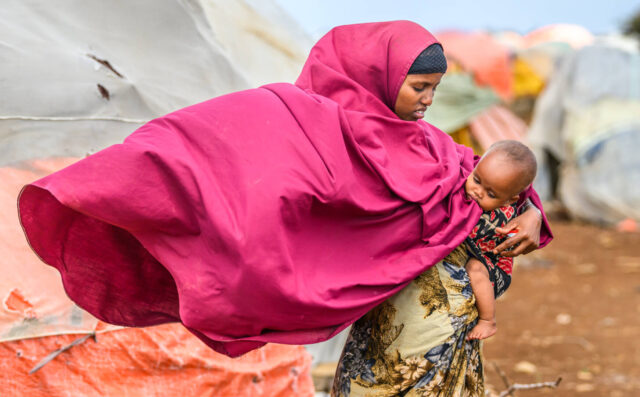Families around the world that make a plan to space out their pregnancies improve the health of both the mothers and children.
Today on International Day of Families, meet two moms in India who chose the best plans for their families to help ensure productive futures for their kids!
“I explored, I understood, and I chose.”
These are the words of two women I met in India in February 2014. Neha and Ashrit both live in villages in the Hardoi district of Uttar Pradesh, India. Neha lives with her husband and two children — 4-year-old Chandan and 18-month-old Naitik. I was on a trip for World Vision and visited several homes.
At Neha’s house, we talked about being a mother and the pleasure of taking care of our families. There was a brief silence and then she burst out, “I want to stop giving birth. I want no more than two children. I think this will make me live longer and stronger and help my family’s financial situation if I have more time to go out and sell some food.”
News of women dying during pregnancy worried her, and Neha told me she had seen this happen quite a few times in her village. Her concern led me to talk about family health, timing and spacing of pregnancies, and even limiting births. Of course I had to gently let her know that none of what I said could be possible unless she or her husband used a modern method of family planning of her choice.
We talked and talked for about 30 minutes. She needed to discuss the idea of seeking family planning services with her husband. I told her that it was best to have a dialogue and together discuss the benefits they both can get from using a modern method of family planning.
In Uttar Pradesh, more than 60% of the population live in rural areas, where access to even basic health services can be limited. The unmet need for family planning in Uttar Pradesh, the most populous state in India, is 21.2% (NFHS-3 2005-2006). That means that women who want to delay (or space pregnancies) or stop childbearing (limit the number of children they have) are not using a form of contraception for various reasons.
The data also informs us that 12.1% want to stop having more children (limiting) and 9.1% want to space their pregnancies. Globally, it is estimated that the deaths of 1.8 million children under 5 could be prevented annually if pregnancies were spaced at healthy intervals.
Healthy timing and spacing of pregnancy — key messages:
- Delay your first pregnancy until you are at least 18 years old
- Wait at least 2 years after one pregnancy before trying for another
- Wait 6 months after a miscarriage before trying for another pregnancy
- Limit pregnancies to a mother’s healthiest years, ages 18-34
Spacing pregnancies by three years would prevent 1 in 4 child deaths, prevent 1 in 3 maternal deaths, and reduce childhood stunting by 50%. The window of opportunity for improving nutrition is the first 1,000 days, from conception through the first two years of life, also giving a mother and baby time to breastfeed.
Neha found an ally in a peer educator, a community volunteer trained by World Vision in counseling skills, messaging on the importance of healthy timing and spacing of pregnancies and family planning (HTSP/FP), and the link to better maternal and child health.
The peer educator would visit Neha when her husband was at home, and provide knowledge on maternal and child health and family planning services. On one of these visits, Neha and her husband received counseling on the range of modern family planning methods offered by the Ministry of Health. With this knowledge, she and her husband made a life-changing decision and chose sterilization, a permanent method of family planning. Neha had her procedure in January 2015.
Ashrit lives with her husband and 8-month-old daughter, Chandani. Her story is slightly different. When Ashrit got married, she wanted to wait a few years before getting pregnant, but family pressure overcame her wishes.
She often partook in street plays (Nukkad Natak) in her village, organized in conjunction with village leaders, and one day the topic was on healthy timing and spacing of pregnancies and family planning. Soon after, Ashrit told me that she and her husband and family members began receiving the same messages by a community health worker — who was also trained by World Vision — during home visits. After the fifth visit, she told her husband that she wanted to use a temporary method of family planning to enable them to space the next pregnancy until Chandani was at least three years old. In November 2014, both she and her husband went to the clinic where she received a method of her choosing.
Now, with bright eyes, Neha and Ashrit say with confidence that they can and will ensure proper care and education for their children.
Through multiple social and behavior change strategies, World Vision is creating a movement of change and awareness about HTSP/FP. In addition, we are using a Citizen Voice and Action approach, which is World Vision’s social accountability strategy to train communities to assess community services, discuss findings with the government leaders, and work together to make joint action plans on how citizens and government can work together to improve family planning and maternal and child health services.
Susan Otchere is currently the project director of the mobilizing for maternal and neonatal health through birthspacing and advocacy (MOMENT) project at World Vision. Nurse-Midwife, MCH, and FP/RH expert.
Learn more about our impact on global health! We focus on maternal and child health, using basic medicines, supplies, and interventions to prevent and treat illnesses at the community level.
Join us in helping to save the most vulnerable lives. Donate today to support our maternal and child health programs.



Comments